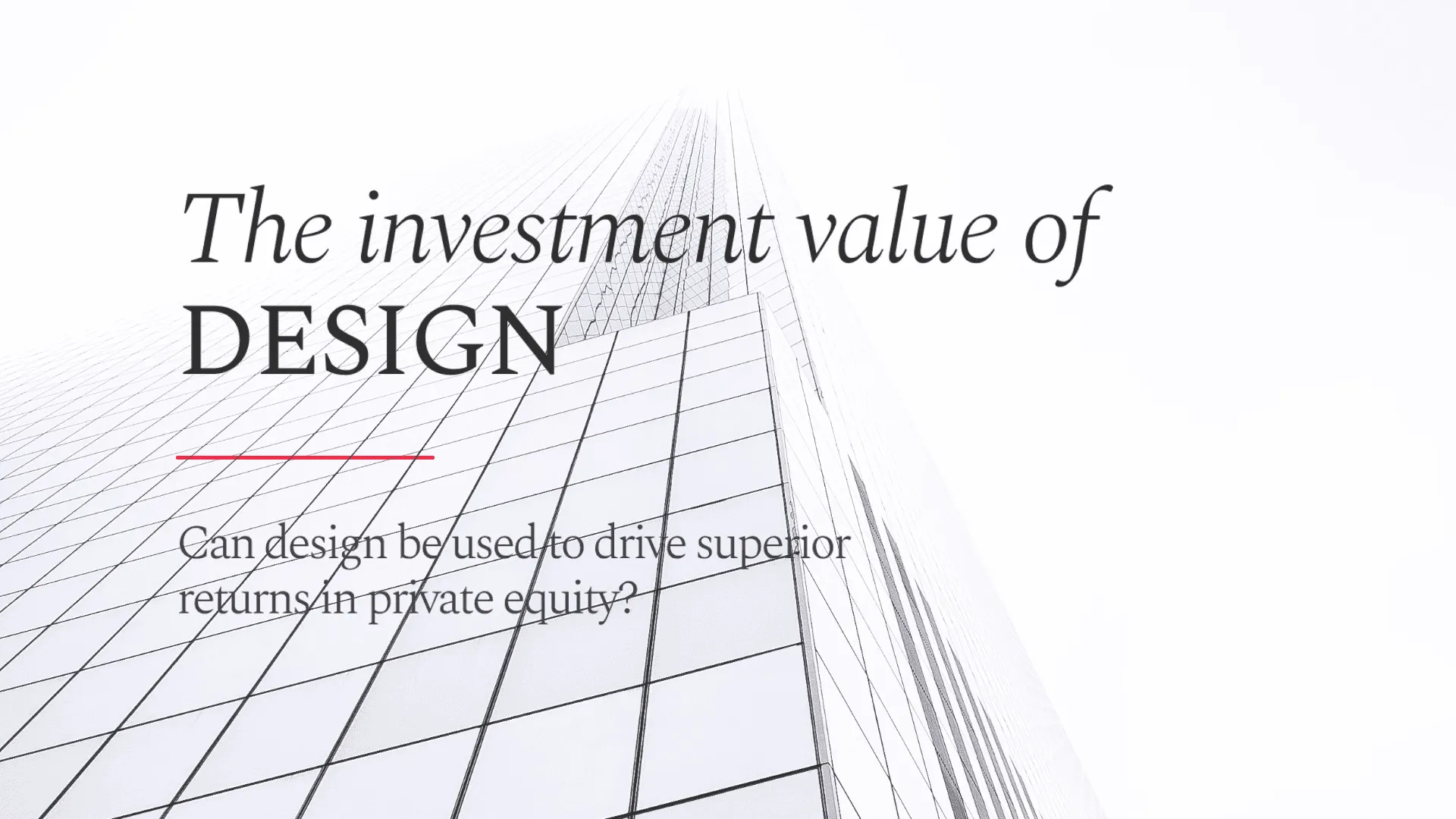In the rapidly evolving fintech landscape, creating memorable user experiences is not just a competitive advantage—it's a necessity. As digital interactions become increasingly complex, the ability to design experiences that resonate deeply with users can set a brand apart. This is where neurodesign comes into play. By leveraging insights from neuroscience, fintech brands can craft experiences that are not only functional but also emotionally engaging and unforgettable. This article delves into the principles of neurodesign and explores how fintech companies can apply these strategies to enhance user engagement, foster loyalty, and drive business success.

The Power of Emotional Design
Emotions are at the core of human decision-making and memory retention. When users interact with a product, their emotional responses can significantly influence their perception and recall of the experience. In the context of fintech, where interactions often involve complex financial decisions, designing for emotion can make a substantial difference.
Understanding Emotional Triggers
To design emotionally engaging experiences, it's essential to understand the triggers that evoke strong emotional responses. These can include:
Storytelling: Narratives that resonate with users' personal experiences can create a powerful emotional connection. Fintech brands can use storytelling to humanize their services, making them more relatable and engaging.
Visual Appeal: Aesthetically pleasing designs can evoke positive emotions and enhance user satisfaction. Fintech apps that prioritize clean, intuitive interfaces are more likely to leave a lasting impression.
Personalization: Tailoring experiences to individual users can foster a sense of connection and ownership. By offering personalized recommendations and insights, fintech platforms can make users feel valued and understood.
Case Study: Emotional Design in Action
Consider a fintech app that helps users manage their savings. By incorporating personalized financial advice and visually appealing progress trackers, the app can evoke feelings of accomplishment and motivation. Users are more likely to remember and return to an app that makes them feel empowered and in control of their financial future.
The Peak-End Rule in Fintech
The peak-end rule, a concept from behavioral economics, suggests that people judge experiences based on their most intense moments and their conclusions. This principle can be a powerful tool for fintech brands looking to enhance user satisfaction and retention.
Designing Impactful Endings
The final moments of a user journey are crucial in shaping overall perceptions. Fintech brands can create memorable endings by:
Surprise Rewards: Offering unexpected bonuses or rewards at the end of a transaction can leave users with a positive impression. For example, a cashback reward after completing a purchase can enhance user satisfaction.
Personalized Thank-You Messages: A simple, personalized message expressing gratitude can make users feel appreciated and valued. This small gesture can significantly impact user loyalty.
Interactive Feedback: Allowing users to provide feedback at the end of an interaction can make them feel heard and involved in the product's development.
Example: Memorable Checkout Experiences
In e-commerce, the checkout process is a critical touchpoint. A fintech platform that facilitates online payments can enhance this experience by incorporating elements of surprise and delight. For instance, a short video message from the brand's founder thanking the user for their purchase can create a personal connection and leave a lasting impression.
Personalization and the Endowment Effect
Personalization is a powerful strategy for enhancing user engagement and satisfaction. By allowing users to customize their experiences, fintech brands can tap into the endowment effect, where individuals value things more highly simply because they own them.
Implementing Personalization in Fintech
To effectively implement personalization, fintech brands can:
Offer Customization Options: Allow users to tailor their experiences by choosing themes, setting preferences, or customizing dashboards. This sense of ownership can increase user satisfaction and loyalty.
Provide Personalized Insights: Use data analytics to offer personalized financial insights and recommendations. By delivering relevant and timely information, fintech platforms can enhance user engagement and trust.
Facilitate Goal Setting: Encourage users to set and track financial goals. Personalized goal-setting features can motivate users to engage more frequently with the platform.
Case Study: Nike's Customization Success
Nike's customization options for shoes serve as an excellent example of the endowment effect in action. By allowing customers to choose colors, materials, and add personal touches, Nike creates a deeply personal and memorable shopping experience. Fintech brands can adopt similar strategies by offering personalized financial products and services.
Building Anticipation and Creating Rituals
Anticipation and surprise are powerful emotional triggers that can enhance user engagement and satisfaction. By designing experiences that build anticipation and deliver delightful surprises, fintech brands can create memorable interactions.
Strategies for Building Anticipation
Variable Rewards: Introduce variable rewards to keep users engaged. By offering different rewards at unpredictable intervals, fintech platforms can maintain user interest and excitement.
Mystery Features: Incorporate mystery features that users can unlock over time. This element of surprise can encourage users to explore the platform and discover new functionalities.
Community Challenges: Host community challenges that encourage users to participate and engage with others. This fosters a sense of belonging and motivates users to return to the platform.
Example: Duolingo's Mystery Streak Rewards
Duolingo's mystery streak rewards are a prime example of building anticipation and surprise. By offering unexpected bonuses after maintaining a streak, Duolingo keeps users engaged and motivated. Fintech brands can adopt similar strategies by introducing gamified elements and rewards.
Creating Rituals for Long-Term Engagement
Rituals can make an experience feel special and meaningful. By incorporating rituals into their product experiences, fintech brands can foster long-term engagement and loyalty.
Designing Effective Rituals
Monthly Challenges: Host monthly challenges that encourage users to set and achieve financial goals. This creates a routine and motivates users to engage regularly with the platform.
Community Building: Foster a sense of community by encouraging users to share their achievements and experiences. This social aspect can enhance user satisfaction and retention.
Celebrating Milestones: Celebrate user milestones, such as reaching savings goals or completing financial courses. Recognizing achievements can boost user morale and encourage continued engagement.
Case Study: Strava's Monthly Challenges
Strava's monthly challenges are a successful example of creating rituals that foster engagement. By encouraging users to participate in challenges and share their progress, Strava builds a strong sense of community and motivation. Fintech brands can implement similar strategies to enhance user engagement and loyalty.
Conclusion
Neurodesign offers a wealth of strategies for fintech brands looking to create unforgettable user experiences. By focusing on emotional engagement, impactful endings, personalization, anticipation, and rituals, brands can design interactions that leave a lasting impression. As the fintech landscape continues to evolve, those who master the art of memorable design will stand out in a crowded market. By tapping into the principles of neurodesign, fintech brands can create experiences that resonate deeply with users, fostering loyalty, engagement, and long-term success.
Final Thoughts
These strategies are just the beginning. There are countless ways to create memorable moments, limited only by your creativity and willingness to experiment. By designing for our emotions, our need for connection, and our desire for variability, fintech brands can create experiences that leave a lasting impression. As you embark on your journey to create unforgettable user experiences, ask yourself: How might we create an experience that leaves a lasting impression?
Key Benefits Recap
Loyalty: A strong, positive end to an interaction boosts customer satisfaction and increases the likelihood of repeat business.
Sharing: Delightful experiences are more likely to be shared, expanding reach organically. Word of mouth is the best marketing.
Higher Customer Lifetime Value: Increased spending and retention.
Engagement: Multi-sensory experiences make interactions more immersive and enjoyable.
Emotional Connection: Aligning physical interactions with personal impact will deepen the bond between the user and your product.
Increased Engagement: Personalized products are more memorable because they reflect the user’s individual preferences and identity.
Better Conversion Rates: When you feel a personal connection to a product or experience, you’re more likely to complete the purchase.
User Retention: Effective rituals create lasting habits.
Higher Satisfaction: Rituals that help people feel good and achieve their goals are likely to be remembered.
Word of Mouth: Shared goals within a community create a strong sense of belonging.
By implementing these strategies, fintech brands can create experiences that not only meet user needs but also resonate on a deeper emotional level, ensuring long-term success in a competitive market.
Aug 14, 2024






